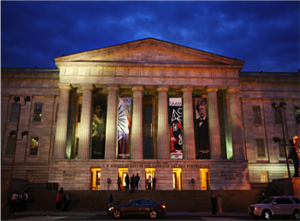Newsletter Item – Synergist
December 8, 2020
By Melissa Q. Miller, Smithsonian National Collections Program, PRICE Program Contractor

Occupational health and safety professionals are nimble, adaptable, and solution-oriented. They need to be in order to work in collaboration with every other profession. I myself am not an industrial hygienist but was fortunate to work with a number of AIHA Potomac members in planning the Fifth Annual Safety and Cultural Heritage Summit (affectionately referred to as the Summit), along with conservation professionals from the Washington Conservation Guild, and colleagues from the Smithsonian Lunder Conservation Center, National Collections Program, and the Office of Safety, Health and Environment Management. This year, while the world faced the critical challenge of controlling a global pandemic, our nimbleness was put to the test.
On October 29th and 30th, an entirely virtual Summit welcomed over 500 participants and panelist from 24 countries representing archives, arts and history organizations, government entities, libraries, museums, private companies, and universities from across the globe. Presentations and panels addressed topics from “A Safer Environment for Stabilization of Moldy Collection” to “Anywhere but Here: How do Industry Decontamination and Ventilation Standards for Eradication of COVID-19 Apply in the Museum Collections Environment?” to “Ethical Considerations in the Removal of Hazardous Materials from Collection Objects: Case Studies from the Nation September 11 Memorial and Museum” to “Help! There are no N95s! Options and Alternatives for N95 Respirator Use.”
Aside from the stimulating information shared through presentations, one of the highlights of the Summit has always been connecting with colleagues through informal conversations. This year, those connections were fostered through discussion forums with speakers and fellow attendees and virtual happy hours. The traditional SAAM gallery tours were provided virtually with several additional virtual museum tours offered as well. Rest and wellness were also promoted during the event through mindfulness videos, quizzes to test your knowledge, word-finds for a little old fashion fun, and musical interludes by a panelist.
One area the Safety and Cultural Heritage Summit strives to improve every year is accessibility and sustainability. This year, through the virtual platform, registration fees and travel expenses were eliminated and ASL interpreters were present for all sessions. Removing financial, geographic, and accessibility barriers for attendees resulted in a greater representation from all over the world. Additionally, session recordings with closed captioning will be made available by late December for attendees and to the general public.
Ultimately, the Safety and Cultural Heritage Summit came at a crucial moment. It provided a much-needed platform for cultural heritage and industrial hygiene professionals to exchange advice, discuss case studies, and provide a sense of community and support as we all work to reopen or close our doors, keep staff and the public safe, and continue to do our due diligence caring for and preserving our nations’ treasures.
Interested in collaborating with your local industrial hygiene professionals? Want to hold a similar seminar at your local museum or conservation guild? Contact Kathryn Makos, Co-chair of the Museum and Cultural Heritage Industry Working Group, at kamakos@verizon.net.